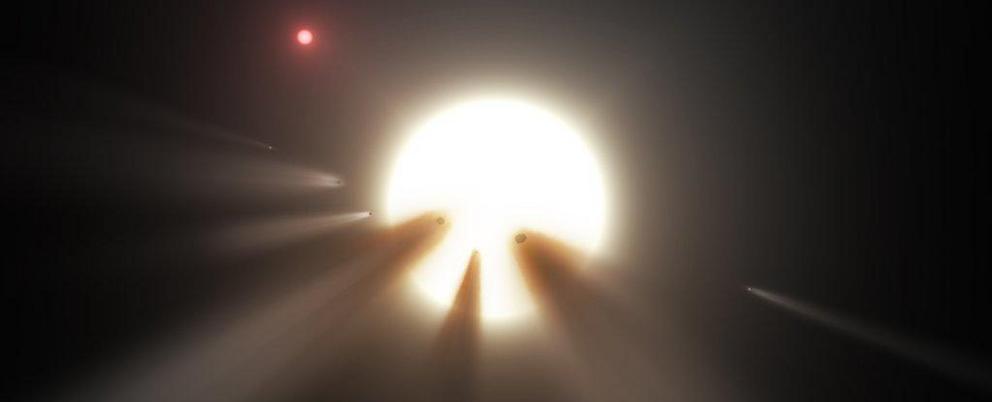Just before our sun dies, its light will shatter the asteroid belt to dust
The light of a dying star is so intense it can reduce asteroids to dust. A new study indicates this will happen to most of the stars currently burning in the Universe, including the Sun, which will shatter its asteroid belt down to boulders in about 5 to 6 billion years.
The sole agent of this mass destruction is electromagnetic radiation, according to modelling, and it has to do with the Yarkovsky-O'Keefe-Radzievskii-Paddack (YORP) effect, named after the four scientists who contributed to understanding it.
The YORP effect occurs when the heat of a star changes the rotation of a small Solar System object - an asteroid, for example.
Light energy from the Sun is absorbed by the asteroid, warming it up. The heat makes its way through the rock until it is emitted again in different directions as thermal radiation.
This emission generates a tiny amount of thrust; over short time periods, this doesn't really change much, but over longer periods, it can cause an asteroid to spin or wobble off-axis.
The phenomenon of tumbling asteroids is one way we can already observe this process today. But as the Sun evolves, the effect is going to become more pronounced.
When main sequence stars like the Sun reach their elderly stages, they enter something called the giant branch stage as they expand out, getting very big and very bright. That stage lasts just a few million years before - whoosh! - they eject their outer material and collapse down into a dense dead star called a white dwarf.
For the Sun, that process will take place in about 5 or 6 billion years (mark it in your calendar).
"When a typical star reaches the giant branch stage, its luminosity reaches a maximum of between 1,000 and 10,000 times the luminosity of our Sun," explained astrophysicist Dimitri Veras of the University of Warwick.
"Then the star contracts down into an Earth-sized white dwarf very quickly, where its luminosity drops to levels below our Sun's. Hence, the YORP effect is very important during the giant branch phase, but almost non-existent after the star has become a white dwarf."
Because of the initially increased luminosity, the YORP effect would also increase. And most asteroids are not dense chunks of rocks; they're more loosey-goosey, low density conglomerations riddled with cavities, known as "rubble piles".
According to the team's computer modelling, the YORP effect would spin most asteroids larger than 200 metres across (about 660 feet) enough to cause them to fracture and disintegrate.
This disintegration wouldn't happen to objects with higher structural integrity, such as dwarf planets (so Pluto is safe!). But an asteroid belt has a different fate.
"For one solar-mass giant branch stars - like what our Sun will become – even exo-asteroid belt analogues will be effectively destroyed," Veras said.
"The YORP effect in these systems is very violent and acts quickly, on the order of a million years. Not only will our own asteroid belt be destroyed, but it will be done quickly and violently. And due solely to the light from our Sun."
It's not just computer modelling that shows evidence of this. Our observations of white dwarfs suggest this, too.
Over a quarter of white dwarf stars have evidence of metals from asteroid guts in their spectra. These asteroid signatures in white dwarf spectra are something of a mystery, and are still debated.
The YORP effect could explain how the asteroid metals got there. As the asteroids crumble, they form a disc of asteroid dust around the white dwarf, some of which gets slurped down into the dead star.
"These results help locate debris fields in giant branch and white dwarf planetary systems, which is crucial to determining how white dwarfs are polluted," Veras said.
"We need to know where the debris is by the time the star becomes a white dwarf to understand how discs are formed. So the YORP effect provides important context for determining where that debris would originate."
The research has been published in the Monthly Notices of the Royal Astronomical Society.

